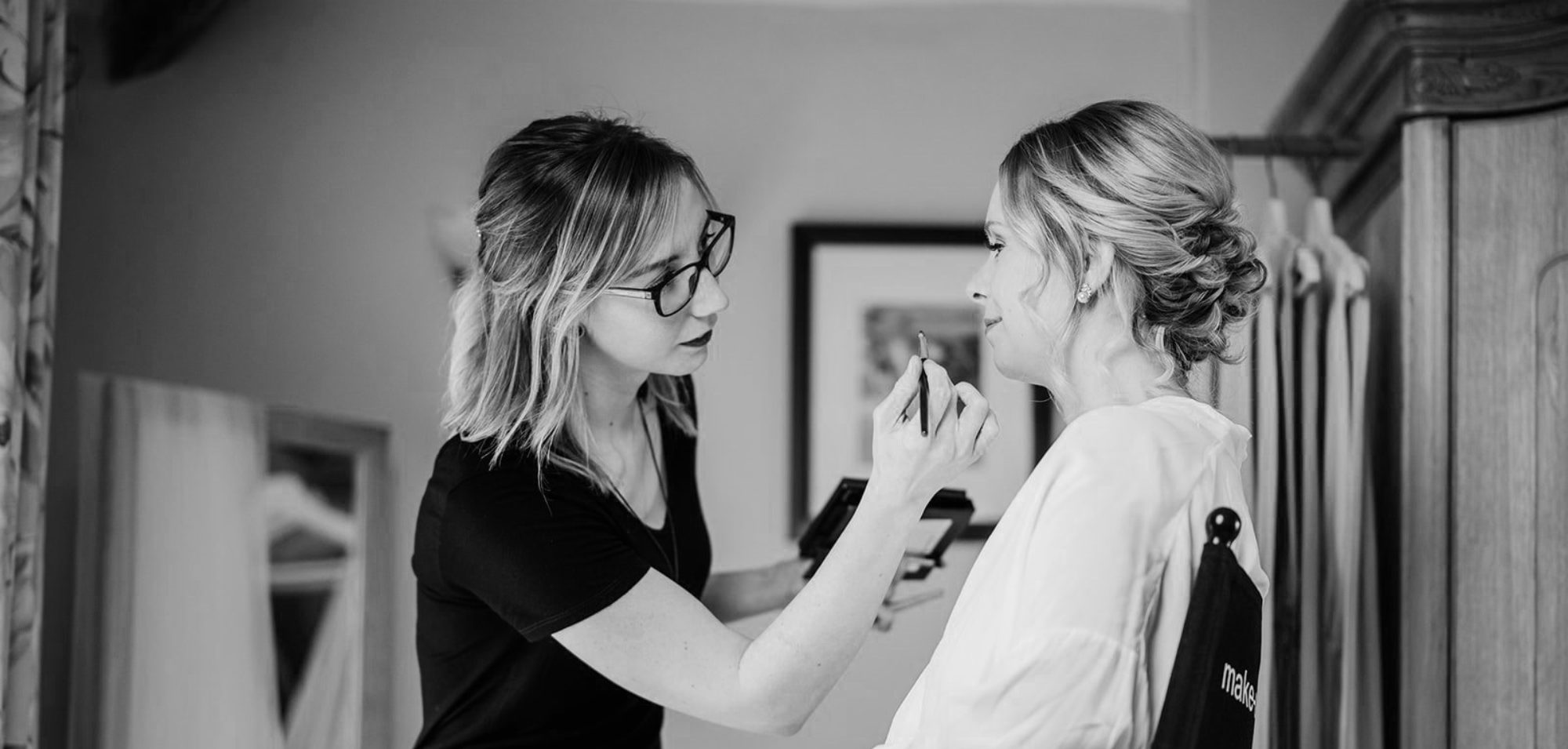1940AD – 1949AD

Due to the Second World War, make-up was extremely scarce so after it had run out, women would use homemade ‘make-up’, just like throughout history.
Skincare:
Skincare was important, especially as most women were now in ‘dirty’ jobs such as farming and factory work to help the war effort. They made sure to cleanse their faces to keep a good complexion. They would use soap and water to cleanse, then a mixture of sugar and lemon juice to exfoliate, then they would apply a cream, and then remove excess with a tissue. Petroleum jelly was used under the eyes to help with puffiness.
Make-up:

Make-up was a lot more ‘natural’ looking than the 1920’s & 30’s, less was always more.
In the UK, cosmetics were not manufactured during the war, so women would use beetroot juice to stain their lips and cheeks and petroleum jelly to define eyelashes. However, in America, make-up was still being made and was classed as essential for the “war effort” to keep spirits up and to “hide sadness to attract men”.
The tan was in fashion; however a lot of people aimed for their own skin shade when it came to foundation.
There wasn’t much choice of foundation shade, especially for women of colour; most foundations were pink based, so they would end up mixing their own make-up. Foundation would have to be blended down the neck and chest as it was rarely a good match to the skin. Women were encouraged to contour their faces with lighter and darker shades of foundation, and then set by pressing powder in using a large velour or wool puff, brushing away excess with a powder brush, making the face matte.
Rouge wasn’t used much; when it was used it was put on sparingly in shades such as pinky-peach, coral and raspberry. It came in “moist rouge” (crème) to be blended into the foundation before powder, or a pressed powdered form to be lightly brushed onto cheekbones.
Eyebrows were much thicker and left to be their natural shape, they would pluck out the odd stray hair to create a natural arch. To define, they would use an eyebrow pencil to draw a line at the top of the brow, though most women would just use petroleum jelly to define them.
Not much make-up was used on the eyes, during the day it would be a light coat of mascara, concentrating on the upper lashes; it now came in liquid form, also the traditional wax blocks.
Eye shadow was available in neutral colours and used for evening looks. They would match their eye shadow to their eye colour; blue eyed ladies would wear blue-grey shadow, grey shadow for green eyes and brown shadow for darker eyes.
Lipstick was the main focus in make-up. Women were even told to keep buying lipstick during the war so they could send letters to the soldiers covered in ‘lipstick kisses’. Lipstick was red and matte, if someone wanted a glossier look, they would apply some Vaseline or oil over the top. By 1943, lip pencils were being used to perfect the lip line; lips were drawn to be equal top and bottom to enlarge the mouth. Max Factor invented “The Hunters Bow Lip”, so women with thinner lips would over line theirs to achieve the “right shape”.
Due to the shortage of nylon and silk, liquid/cosmetic stockings became a ‘thing’. In the UK there were ‘Miner’s Make-up Liquid Stockings’, though usually women and girls would paint their own legs using tea or gravy, with a painted black line down the back for the seam. This service was even available in beauty salons.
Hair:

Hair care was a time consuming task, most women would wait to go to the hair salon to get their hair washed and re-set once a week, or as often as affordable. To save time, some factory managers put salons into the factories, this meant less time was spent away from work and boosted moral. When shampoos became scarce and poor quality, women would steam their hair over hot water then scrub the dirt off with a towel.
Hair was usually cut into a horseshoe shape at the back, curving up toward to ears and parted to one side. It was usually shoulder length with curls and volume.
They would pin-curl their hair in the evening and then style it in the morning, such as into ‘Victory rolls’ or a ‘poodle’. In the early 1940’s, hair was short with tight curls and waves around the face, it was practical. Then there was the half up half down that was brushed into big fluffy curls at the ends and could be put into rolls on the sides. When hair lacked a natural curl, it was good to put it into a ‘pompadour’ style where it was rolled up high onto the head and pinned in place, it could be backcombed or use ‘rats’ for volume.
By 1945, hair styles became smoother and worn down with rolls on the sides, so it was much more simple.

NEXT: 1950’s
BACK: 1930’s

